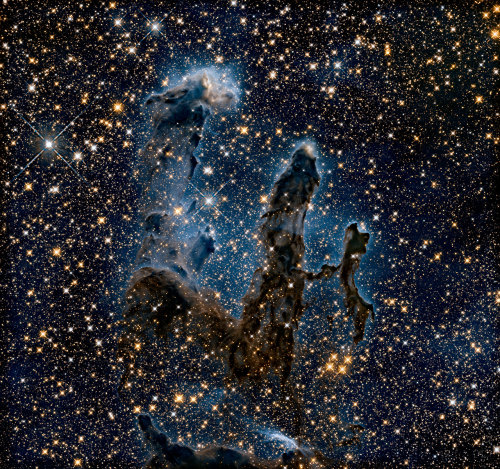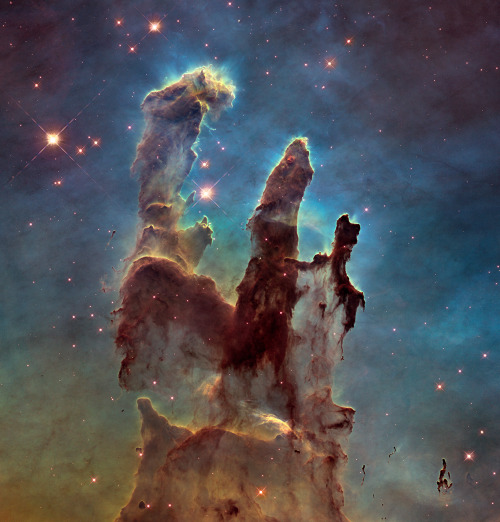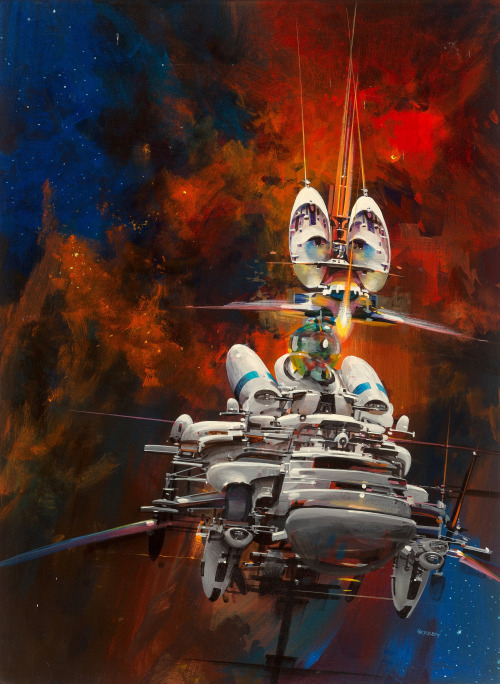VMF-422 Corsairs

VMF-422 Corsairs
More Posts from Epic-flight and Others







Artworks by Lucio Perinotto
1936-1945 | Boeing B-17 Flying Fortress
1953-1959 | North American F-100 Super Sabre
1936-1942 | Latécoère Laté 298
1941-1945 | Hawker Typhoon
1934-1936 | Caudron C.460 Racer
1938-1948 | Supermarine Spitfire
1936-1945 | Boeing B-17 Flying Fortress

Proposal for GIF IT UP 2016


Sometimes… there’s more than meets the eye. 👀 You’re looking at two very different takes on an iconic image.
Human eyes can see only a small portion of the range of radiation given off by the objects around us. We call this wide array of radiation the electromagnetic spectrum, and the part we can see visible light.
In the first image, researchers revisited one of Hubble Space Telescope’s most popular sights: the Eagle Nebula’s Pillars of Creation. Here, the pillars are seen in infrared light, which pierces through obscuring dust and gas and unveil a more unfamiliar — but just as amazing — view of the pillars. The entire frame is peppered with bright stars and baby stars are revealed being formed within the pillars themselves. The image on the bottom is the pillars in visible light.
Image Credit: NASA, ESA/Hubble and the Hubble Heritage Team
Make sure to follow us on Tumblr for your regular dose of space: http://nasa.tumblr.com.
View these celestial beauties taken by the Hubble Space Telescope and released as a set of views in a modern day “Messier Catalog."
Spotting comets was all the rage in the middle of the 18th century, and at the forefront of the comet hunt was a young French astronomer named Charles Messier. In 1774, in an effort to help fellow comet seekers steer clear of astronomical objects that were not comets (something that frustrated his own search for these elusive entities), Messier published the first version of his “Catalog of Nebulae and Star Clusters,” a collection of celestial objects that weren’t comets and should be avoided during comet hunting. Today, rather than avoiding these objects, many amateur astronomers actively seek them out as interesting targets to observe with backyard telescopes, binoculars or sometimes even with the naked eye.
Hubble’s version of the Messier catalog includes eight newly processed images never before released by NASA. The images were extracted from more than 1.3 million observations that now reside in the Hubble data archive. Some of these images represent the first Hubble views of the objects, while others include newer, higher resolution images taken with Hubble’s latest cameras.
Learn more: https://www.nasa.gov/content/goddard/hubble-s-messier-catalog
Make sure to follow us on Tumblr for your regular dose of space: http://nasa.tumblr.com.









Quantum Physics: The study of Super Cold and Super Small.
Via The cosmos way

SSTO Orbital Lander
Movie: Interstellar UI Design: Double Negative

'plane-view'

JOHN BERKEY Unknown Casein/Acrylic









“I would like to humanize the space age by giving a perspective from a non-astronaut, because I think the students will look at that and say, ‘This is an ordinary person. This ordinary person is contributing to history.’”
—Christa McAuliffe (September 2, 1948–January 28, 1986)

Rick Guidace’s concept art depicting the rings of Uranus in polar rotation
-
 tigers837 liked this · 4 years ago
tigers837 liked this · 4 years ago -
 thortoncu1 liked this · 4 years ago
thortoncu1 liked this · 4 years ago -
 epic-flight reblogged this · 4 years ago
epic-flight reblogged this · 4 years ago -
 73anthrax liked this · 4 years ago
73anthrax liked this · 4 years ago -
 ragnar4ward reblogged this · 4 years ago
ragnar4ward reblogged this · 4 years ago -
 lumpy-897 reblogged this · 4 years ago
lumpy-897 reblogged this · 4 years ago -
 lizzy52955 reblogged this · 4 years ago
lizzy52955 reblogged this · 4 years ago -
 lizzy52955 liked this · 4 years ago
lizzy52955 liked this · 4 years ago -
 ronald18101973 liked this · 4 years ago
ronald18101973 liked this · 4 years ago -
 ghost-account-1 liked this · 4 years ago
ghost-account-1 liked this · 4 years ago -
 lilavoandcheese liked this · 4 years ago
lilavoandcheese liked this · 4 years ago -
 dadsride69 liked this · 4 years ago
dadsride69 liked this · 4 years ago -
 kelvinpuma liked this · 4 years ago
kelvinpuma liked this · 4 years ago -
 f4u1corsair liked this · 4 years ago
f4u1corsair liked this · 4 years ago -
 binsarwar liked this · 4 years ago
binsarwar liked this · 4 years ago -
 lckstrk liked this · 4 years ago
lckstrk liked this · 4 years ago -
 azcep liked this · 4 years ago
azcep liked this · 4 years ago -
 tony6775-blog liked this · 4 years ago
tony6775-blog liked this · 4 years ago -
 iamgroot65 liked this · 4 years ago
iamgroot65 liked this · 4 years ago -
 eine-lange-augenblick reblogged this · 4 years ago
eine-lange-augenblick reblogged this · 4 years ago -
 echoseventeen reblogged this · 4 years ago
echoseventeen reblogged this · 4 years ago -
 greatmagazinestudent-world liked this · 4 years ago
greatmagazinestudent-world liked this · 4 years ago -
 rsrocker reblogged this · 4 years ago
rsrocker reblogged this · 4 years ago -
 rsrocker liked this · 4 years ago
rsrocker liked this · 4 years ago -
 echotango7 reblogged this · 4 years ago
echotango7 reblogged this · 4 years ago -
 echotango7 liked this · 4 years ago
echotango7 liked this · 4 years ago -
 db1961 liked this · 4 years ago
db1961 liked this · 4 years ago -
 israelquinones9 liked this · 4 years ago
israelquinones9 liked this · 4 years ago -
 unkabobbo liked this · 4 years ago
unkabobbo liked this · 4 years ago -
 vonmouse1962 liked this · 4 years ago
vonmouse1962 liked this · 4 years ago -
 starscreamjosh reblogged this · 4 years ago
starscreamjosh reblogged this · 4 years ago -
 starscreamjosh liked this · 4 years ago
starscreamjosh liked this · 4 years ago -
 rpd107 liked this · 4 years ago
rpd107 liked this · 4 years ago -
 deucstrkr liked this · 4 years ago
deucstrkr liked this · 4 years ago
